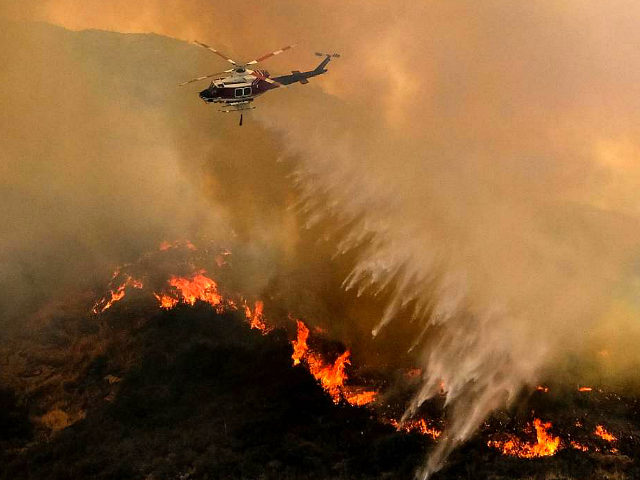California Department of Forestry and Fire Protection announced Monday that the state spent 98 percent of its 2018 budget and is only halfway through the wildfire season.
California has spent $432 million of this year’s $443 million budget for the fire year that runs from May 15 through December 15. CalFire has asked for emergency money from reserves in 8 of the last 10 years, but Director Ken Pimlott’s request on Thursday for another $234 million is the earliest for any fire year, according to the Sacramento Bee.
Pimlott highlighted in a justification letter to the Legislature that 5,491 wildfires burning 1.2 million acres is just the beginning as “climate change-driven extreme weather conditions continue to drive intense and large fires.”
The bulk of expense this year has gone to fight the Mendocino Complex Fire that started in July and was not fully contained until Saturday. The fire is now the largest in state history, having burned a record of 459,123 acres and 280 structures.
California is susceptible to wildfires throughout the year, but the biggest fires tend to occur in fall when hot, dry temperatures are aggravated with winds from the Great Basin, known as Santa Ana winds in Southern California and Diablo winds in the north.
Before the Mendocino Complex Fire, a 2015 study of wildfires during the Santa Ana season — late September through the end of the year — caused far greater structural damage than fires in the summer. The report highlighted that all ten of California’s most destructive wildfires occurred between September and December.
The 2018 fire year is still far from being the most expensive. That title goes to the $773 million cost in 2017; followed by $608 million in 2016; $499 million in 2009; and $524 in 2008.
There currently are 15 named uncontained fires burning in California, with the Delta Fire near Mount Shasta causing the Shasta County Sheriff to conduct evacuations on both sides of I-5 freeway north of Lakehead. Earlier this summer, the Carr Fire burning 229,651 acres in Shasta County and destroying 1,604 structures.
California may catch a break with the return of the El Niño weather conditions. According to the U.S. Climate Prediction Center, there is 60 percent chance of an El Niño in the Northern Hemisphere between September to November, increasing to 70 percent chance during winter of 2018-19.
The potential impact of an El Niño favors warmer than average conditions for the northern tier of the continental U.S., and cooler than average conditions for much of the southern tier of the U.S. Drier than average conditions are favored for parts of the Pacific Northwest and above average precipitation is more likely along the southern tier of the U.S. for California, the Southwest, and the southern Plains.
The good news for California is that El Niño winter storms could sharply curtail wildfires. But the bad news for California is that El Niño storms could drench burned areas across the state, causing massive flooding and mudslides.

COMMENTS
Please let us know if you're having issues with commenting.